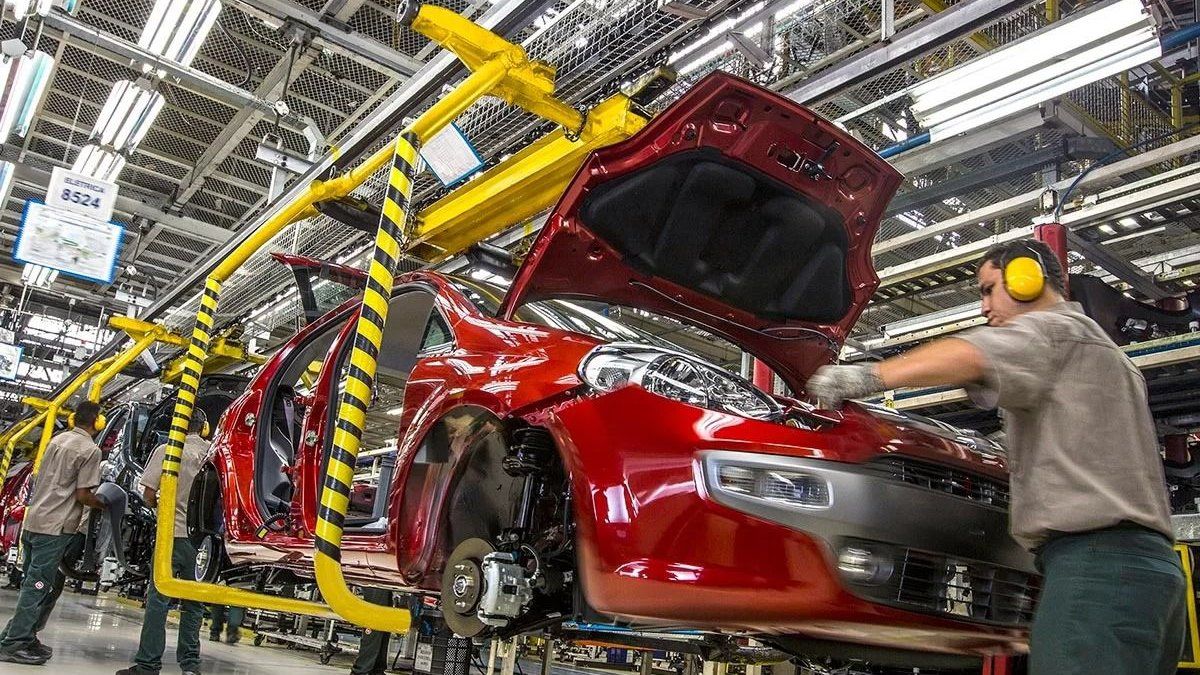That month, eleven of the sixteen divisions of the manufacturing industry presented year-on-year falls.
In order to its incidence at the general level, decreases of 15.8% were registered in “Furniture and mattresses and other manufacturing industries”; 3.8% in “Chemical substances and products”; 1.6% in “Food and beverages”; 7.6% in “Rubber and plastic products”; 6.1% in “Clothing, leather and footwear”; 7.4% in “Automotive vehicles, bodies, trailers and auto parts”.
Subsequently, the index shows drops of 3.2% in “Wood, paper, publishing and printing”; 7.8% in “Textile products”; 1.8% in “Non-metallic mineral products”; 2.7% in “Other equipment, apparatus and instruments”; and 12.9% in “Other transport equipment”. On the other hand, increases of 4.9% were observed in “Oil refining, coke and nuclear fuel”; 1.8% in “Basic metal industries”; 1.4% in “Machinery and equipment”; 1.5% in “Metal products” and 5.5% in “Tobacco products”.
Construction fell more than 10% in December
While, in December 2022 the synthetic indicator of construction activity (ISAC) shows a drop of 10.6% compared to the same month of 2021. The accumulated index for 2022 of the original series shows a rise of 3.5% compared to the same period of 2021.
In December 2022, the seasonally adjusted series index shows a negative variation of 3.5% compared to the previous month and the trend-cycle series index registers a negative variation of 1.2% compared to the previous month.
The data on the apparent consumption of inputs for construction in December 2022 show, in relation to the same month of the previous year, increases of 16.8% in the rest of the inputs (includes faucets, seamless steel tubes, and building glass); 15.0% in granite and calcareous mosaics and 2.4% in plasterboard.
Meanwhile, decreases of 23.1% are observed in paints for construction; 22.8% in ceramic floors and coverings; 22.6% in hollow bricks; 19.8% in limes; 18.5% in asphalt; 15.7% in plaster; 9.0% in portland cement; 7% in round iron and steel for construction; 4.7% in ceramic sanitary ware; and 2.3% in finished concrete.
On the other hand, if the variations of the accumulated during 2022 as a whole are analyzed in relation to the same period of the previous year, increases of 23.6% are observed in the rest of the inputs (includes faucets, seamless steel tubes, and building glass); 13.7% in finished concrete; 9.1% in plasterboard; 7.5% in round iron and steel for construction; 7.3% in portland cement; 5.2% in ceramic sanitary ware; 5.0% in granite and calcareous mosaics; 3.2% in plaster; 1.2% in limes; 0.2% in ceramic floors and coverings; and 0.1% in asphalt.
Meanwhile, falls of 6.9% are observed in hollow bricks and 4.6% in construction paints.
Source: Ambito




